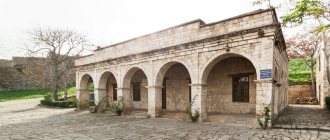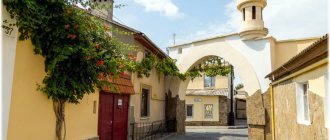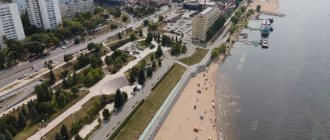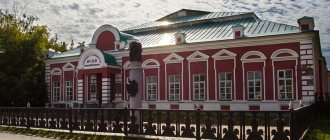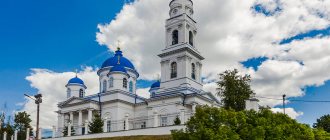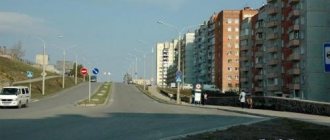Over the three hundred years of its existence, Zlatoust, founded in 1754 on the site of the Novo-Uralsky prison, managed to cover the path from a workers' village at an ironworks to a modern city. The entire fate of the policy is inextricably linked with metallurgy and its accompanying industries. It was here that the first Russian cannons were cast, and the skill of local gunsmiths, watchmakers, and metal engravers is known far beyond the borders of not only the Urals, but also the country. The sights of Zlatoust, photos and descriptions of which you will find below, are original and colorful. Factory Square in the historical part of the city, for example, is included in the register of cultural heritage sites of the Russian Federation.
The main attractions of Zlatoust: TOP-5
Several attractions of the Ural city stand out from the crowd. These objects are considered to be the calling cards of Chrysostom.
Mount Kosotur
- Address: northern shore of Zlatoust Pond. Transport stop "1st Tesminskaya Street".
This business card of Chrysostom is visible from any part of the policy. The picturesque mountain, 634 m high, occupies approximately 180 hectares of forest park area within the city. It seems that Chrysostom was specially built around its main natural attraction. The three-horned hill is formed from shales riddled with quartz veins. In the ravines encircling its base, numerous springs flow, feeding the Kamenka, Tesma and Ai rivers. The slopes of Kosotur, covered with spruce, fir, pine and larches, look very picturesque.
Monument to P. Anosov
- Address: Masterskaya street. Transport stop "Ploshchad III Internationala".
The transformation of the local Arms Factory into one of the best factories in the world was greatly facilitated by the talented metallurgist and researcher of the Urals Pavel Petrovich Anosov. The grateful townspeople never forgot about this. Therefore, in 1954, a monument to a remarkable man appeared on the central square of the city, who began his career as a factory trainee engineer and rose to the rank of major general. The height of the monument is 9.5 m. The bronze sculpture of Anosov in a general's uniform, holding a strip of damask steel in his hands, is placed on a pedestal lined with red granite.
Sculpture-fountain “Winged Horse”
- Address: st. Taganayskaya. Transport stop "Administration".
The image of a winged horse is found everywhere in Chrysostom. It adorns the city’s coat of arms, house facades, and steles. But the most important Pegasus was installed in the spring of 1984 on the square opposite the Main Post Office. The bronze sculpture of a horse, majestically spreading its powerful wings, is the center of the architectural and hydraulic composition. The pedestal on which the statue is placed rises above the bowl of a small fountain, lined with aristocratic marble.
Bell tower of John Chrysostom
- Address: Bazhovskaya Gorka. Transport stop "Village Krasnaya Gorka".
In the fall of 2006, the city acquired its newest calling card. Then the grand opening of the elegant tower with a belfry took place. The event was timed to coincide with the 1600th anniversary of the glorification of St. John Chrysostom, whom the townspeople consider their heavenly patron. The height of the elegant chapel is 53.4 m. On its belfry there is a bell weighing 1.3 tons. The observation deck, equipped on the upper tier of the bell tower, offers magnificent panoramic views.
One Happy Kuzyuk
- Address: Gagarin Avenue. Transport stop "Trading complex".
At the beginning of the 19th century. The residents of Zlatoust acquired a humorous nickname - “Kuzyaks”. It comes from the abbreviated name of the city-forming enterprise “State Ural Plants”. Already in this century, this was remembered at the Arms Factory, where they began to mint a commemorative coin in denomination of one lucky kuzyuk. The money can be made of brass, silver or gold. Some specimens were smelted with inclusions extracted from the remains of the Chelyabinsk meteorite. The coin is so popular among collectors that a monument was erected in its honor on one of the streets of Zlatoust. You can’t help but take a photo at the human-sized art object as a souvenir.
Climate and ecology of Zlatoust
The sharply continental climate provides long, cold winters and short, cool summers. Good weather is a rare guest here; in winter the temperature regularly drops to its maximum; in summer it is usually cloudy and far from hot. Compared to neighboring cities, the snow in Zlatoust melts much later and falls the fastest. When the snow cover in Miass has not yet stabilized, there are snowdrifts in the mountainous Zlatoust.
In the summer, it’s easy to miss the swimming season; it’s cloudy outside and a cool wind is blowing, but on Turgoyak, a few kilometers from the city, it’s hot and sunny. In general, the climate is reminiscent of the north, with the difference that winters are still a little shorter and summers a little warmer.
The ecological situation in the city is characterized by polluted air. An increased concentration of harmful substances is observed in the old part of the city due to the fact that most of the industrial enterprises are located in this area.
Trumpets of Chrysostom
To improve the environment, a mountain pond is being cleaned and a sewer tunnel is being built. The forest next to the city purifies the air, so Zlatoust, in terms of pollution, is far from first place on the list of the dirtiest cities.
Architecture and monuments of Zlatoust
During a tour of the city, tourists will see many ancient mansions and original buildings. Connoisseurs of monumental art will also find something to see in Zlatoust.
Arsenal building
- Address: III International Square, 1. Transport stop "TRK Agat".
The U-shaped mansion of the Arsenal, the construction of which was completed in the summer of 1833, is an important element of the architectural ensemble of the historical center of the city. The facade of the brick building is decorated with arched windows of the second tier. The central portal is slightly placed outside the main volume. In front of the entrance to the local history museum, which occupies part of the premises of the house, there are cannons cast at the local Arms Factory. Against the background of a monument of industrial architecture of the 19th century. Tourists love to take pictures.
Monument to A. Bushuev
- Address: st. Anosova. Transport stop "Railway Station".
Opposite the city railway station there is a monument to the man who glorified Zlatoust throughout Russia. The filigree works of the unsurpassed master of engraving Ivan Bushuev are included in the exhibitions of the Armory Chamber and many other foreign and domestic museums. The sculptor depicted Bushuev at the moment of creation. The master, dressed in work clothes, holds a newly made blade in his raised hand. The five-meter statue is placed on a pedestal lined with red granite.
The building of the cinema "Colosseum"
- Address: st. Kalinina, 3. Transport stop “Diagnostic Center”.
At the beginning of the last century, the inhabitants of Zlatoust showed a keen interest in the most important of the arts, according to the leader of the world revolution. Therefore, there were two cinemas operating in the city at once. However, by coincidence, a fire destroyed both wooden buildings. Then it was decided to build a new cinema, made of stone. The colorful mansion with intricate decor regularly performed educational functions until the end of the 30s of the 20th century. Later, an archive and then a supermarket were located within its walls. However, at all times the original building remained an architectural landmark of Zlatoust.
Stele "Europe - Asia"
- Address: M5 highway, eight km from Zlatoust.
This attraction is visible to all travelers traveling along the M5 highway in the direction of Miass. Eight km from Zlatoust, a stele was installed on the side of the road. It is in this place that the geographical border between Europe and Asia lies. The height of the obelisk, made of stainless steel, is about 7 m. Signs on the structure are placed so that the driver sees the name of the part of the Eurasian continent into which he is driving.
Color photographs of the black and white era...
Today, few people in Russia remember the remarkable scientist and photographer Sergei Mikhailovich Prokudin-Gorsky. At the beginning of the 20th century, when color photography did not yet exist (color photographic film first appeared only in the 30s), the scientist managed to come up with and implement a unique method of displaying color in photographic images. This method is simple, like everything ingenious. Sergei Mikhailovich developed a special camera that took three photographs of the same scene through three different filters - blue, green and red. From the resulting photographic plate a transparencies were made, or rather three black and white transparencies located one above the other on a thin glass plate. This plate was placed in a slide projector, also designed by Prokudin-Gorsky. Each of the slides on the plate was projected onto the screen through its own red, green or blue filter, and on the screen the images were combined and full-color images appeared. These may have been the world's first slide shows.
The disadvantages of the method, or more precisely the technical imperfections of the camera created by Prokudin-Gorsky, include its inability to photograph moving objects in color. Since the three photographs necessary to obtain the color were taken at intervals of approximately one second, during this time the moving object had time to shift in space and, when combining the photographs in an overhead projector, appeared in the form of blurry colored spots. This can be seen in some photographs, for example, rainbow smoke from a chimney, chickens walking along the street, etc. However, while already in exile, the scientist improved the design of his camera, using a prism to split light and all three photographs were taken simultaneously. By the way, neither drawings nor images of the Prokudin-Gorsky camera have survived. It was probably similar to the model (shown in the picture) created around 1906 by Dr. Adolf Miethe, whom Prokudin-Gorsky met in Germany.
Here is a comment from a specialist about the Prokudin-Gorsky method and the equipment he used, Arthur Goldsmith, editor of the publications Popular Photography and Camera Arts, author of the book Camera and Photography. The Camera and Its Images"): “Prokudin-Gorsky used a camera that produced three individual negatives, separate in color, with one charge. Opening and closing the shutter, changing color filters and changing the position of the plate in each of the three exposures were probably provided by a spring mechanism. To achieve high-quality images at one-second (or so) intervals, the camera had to be mounted in a very, stable position; the photographer could only photograph stationary objects. Although most of Prokudin-Gorsky's surviving works are landscapes and architectural structures, he also has many portraits and charming genre studies. From a historical perspective, a three-second exposure is not very long for a stationary subject. Before the introduction of quick-drying plates in 1880, longer exposures were required...
...The limitations of the Prokudin-Gorsky camera were eliminated by the invention of the “single-shot” color camera, which made three color-separated exposures using a beam-splitting prism. Prokudin-Gorsky later himself patented a similar photographic device, including a movie camera for color filming. Is it possible that he used one of the early one-shot models for his pre-war photographs? Until new historical information is received, we don’t know...”
Theaters and museums of Zlatoust
Tourists who decide to visit a small town near the border of Europe and Asia will not be bored. Among the places where an inquisitive traveler who wants to fill his leisure time can go in Zlatoust, interesting museums and local Drama should be highlighted.
Museum of Local Lore
- Opening hours: daily, except Mondays, from 10:00 to 17:30.
- Ticket price: adult 100 rubles, children 50 rubles.
- Telephone.
- Website: https://zlatmuseum.ru
- Address: III International Square, 1. Transport stop "TRK Agat".
The exhibition halls of the institution display exhibits telling about the nature, history, and ethnography of the Southern Urals. The exhibition is divided into thematic sections. Some of them are dedicated to the amazing master engravers and foundries for whom Zlatoust is famous. Several halls display the works of Ural painters, graphic artists, sculptors, and masters of decorative and applied arts. Collections of bladed weapons, firearms, minerals, and archaeological artifacts are of constant interest to visitors.
Arms Factory Museum
- Opening hours: daily, from 11:00 to 17:00 on weekends, from 9:00 to 18:00 on weekdays.
- Ticket price: adult 300 rub., student 150 rub., child 70 rub.
- Telephone.
- Website: https://museum.zof.ru/museum
- Address: III International Square, 16. Transport stop "TRK Agat".
The museum's exhibitions tell the story of the history of the first Russian state weapons factory, founded under Emperor Alexander I. It was in Zlatoust that pikes, broadswords, sabers, and daggers were made for the Russian army that defeated Napoleon. The exhibition halls display samples of various types of weapons that the factory produced at different times. A special section is reserved for the exhibition of dishes, church utensils and engravings created by the hands of unsurpassed Ural craftsmen.
Drama Theater "Omnibus"
- Opening hours: performances are given daily, except Mondays. Evening performances start at 18:00, daytime performances at 10:00 or 12:00.
- Ticket price: from 120 rubles to 300 rubles.
- Telephone.
- Website: https://omnibuszlat.ru
- Address: III International Square, 2. Transport stop "TRK Agat".
In two years, the oldest theater in the Southern Urals will celebrate its 100th anniversary. For over a century, the artistic team of the institution has never ceased to delight local fans of Melpomene with vibrant performances. Along with productions of plays by classics of world drama, directors and actors of the troupe regularly present to the audience performances dedicated to the past and present of their native Chrysostom. The theater actively tours the country and is a winner of several All-Russian festivals.
Chrysostom Arsenal Museum of the Zlatoust Plant and its exhibits
21. S. M. Prokudin-Gorsky. A hill of weapons in the Arsenal Museum of the Zlatoust plant. 1910
22. S. M. Prokudin-Gorsky. General view of the hall in the Arsenal Museum of the Zlatoust Plant. 1910
The building of the Zlatoust Arsenal was built in 1825 - 1833 according to the design of A.I. Posnikov. For many years, the Arsenal building housed an archive, a factory library and a museum. The basis of the museum collections were samples of edged weapons (starting from 1816 - 1817); the second richest mineralogical collection in Russia; samples and models of machines, tools; exhibits illustrating manufacturing technologies of products from Zlatoust factories.
23. S. M. Prokudin-Gorsky. The sequential process of making knives and forks. Autumn 1909.
24. S. M. Prokudin-Gorsky. The sequential process of making knives and forks. Grinding and engraving. Autumn 1909.
25. S. M. Prokudin-Gorsky. Consistent progress in the manufacture of blades, sheaths and the production of welding damask steel at the Zlatoust plant. Samples of soldiers' checkers. Autumn 1909.
The inscription on the stand: “Ten turns of preparing wooden scabbards for checkers. Carpentry shop."
26. S. M. Prokudin-Gorsky. Consistent progress in the manufacture of blades, sheaths and the production of welding damask steel at the Zlatoust plant. Samples of soldiers' checkers. Autumn 1909.
27. S. M. Prokudin-Gorsky. Consistent progress in the manufacture of blades, sheaths and the production of welding damask steel at the Zlatoust plant. Samples of soldiers' checkers. Autumn 1909.
28. S. M. Prokudin-Gorsky. Consistent progress in the manufacture of blades, sheaths and the production of welding damask steel at the Zlatoust plant. Samples of soldiers' checkers. Autumn 1909.
29. S. M. Prokudin-Gorsky. Consistent progress in the manufacture of blades, sheaths and the production of welding damask steel at the Zlatoust plant. Samples of soldiers' checkers. Autumn 1909.
30. S. M. Prokudin-Gorsky. Consistent progress in the manufacture of blades, sheaths and the production of welding damask steel at the Zlatoust plant. Samples of soldiers' checkers. Autumn 1909.
31. S. M. Prokudin-Gorsky. Consistent progress in the manufacture of blades, sheaths and the production of welding damask steel at the Zlatoust plant. Samples of soldiers' checkers. Autumn 1909.
32. S. M. Prokudin-Gorsky. Consistent progress in the manufacture of blades, sheaths and the production of welding damask steel at the Zlatoust plant. Samples of soldiers' checkers. Autumn 1909.
33. S. M. Prokudin-Gorsky. Consistent progress in the manufacture of blades, sheaths and the production of welding damask steel at the Zlatoust plant. Samples of soldiers' checkers. Autumn 1909.
Temples of Chrysostom
In Zlatoust, as well as in Chelyabinsk or Yekaterinburg , there are several magnificent churches. The multinational population of the policy has the opportunity to practice traditional religions, visiting Orthodox churches and mosques.
Church of St. Simeon of Verkhoturye
- Opening hours: daily, from 7:00 to 19:00.
- Telephone.
- Website: https://zlat-simeon.cerkov.ru
- Address: st. Rumyantseva, 1. Transport stop “Simeonovskaya Church”.
The first church in the name of St. Simeon, built with donations from the staff of the Zlatoust railway station, was consecrated in 1902. With the advent of Soviet power, persecution of religion began. The church was first closed, and in the 60s of the last century it was completely demolished, considering that a cinema was more important for the city. Through the efforts of an initiative group of citizens, the temple was restored. By decision of the authorities, the unfinished pharmacy management building was handed over to the Orthodox community. Construction work began in 2002 and was successfully completed 5 years later. Under the shadow of an elegant church built in the Novgorod style, Orthodox relics are kept - the icon of the Mother of God “Quick to Hear”, the image of St. Luke, and the Great Martyr Barbara.
Cathedral of Seraphim of Sarov
- Opening hours: daily, from 7:00 to 19:00.
- Telephone.
- Website: https://www.zlatserafim.ru
- Address: st. Taganayskaya, 196. Transport stop "City Hospital".
The main temple of the city was built in modern times. The ceremony of its consecration took place in the fall of 1999. Despite this, the church does not look like a new building. When developing the building project, modern architects tried to follow the canons of ancient Russian religious architecture. Therefore, the appearance of the white stone cathedral is not too different from the exterior of the ancient churches of Vladimir or Ryazan . The church is decorated with kokoshniks of various sizes, carved columns, and arches. The main temple shrines are considered to be icons with particles of the relics of Seraphim of Sarov, Innocent of Moscow and Philaret of Moscow.
Cathedral Mosque
- Opening hours: daily, from 9:00 to 18:00.
- Telephone.
- Address: pos. Aisky, 1A. Transport stop "Tram management".
Many Muslims have always lived in Zlatoust, but there was only one mosque. By the beginning of this century, the small room could no longer accommodate all the parishioners during religious holidays. In addition, the ancient building is very dilapidated. Therefore, in 2010, a decision was made to build a new Muslim temple. Three years later, a gilded crescent shone above him. From the outside, the mosque looks discreet. But its interiors are decorated with unique decor - engravings of the 99 names of Allah, inscribed in intricate patterns. The filigree work of Chrysostom's master gunsmiths is amazing.
History of the creation of the photo collection
In the then “black and white era,” Prokudin-Gorsky’s contemporaries were greatly impressed by the display of photographs in “natural colors.” But all this would have remained just another milestone in the history of photography if not for Emperor Nicholas II, who himself was a great lover of photography. A grandiose project was conceived to create a documentary photographic overview of the Russia of that time. This project was primarily of an educational nature: with the help of “optical color projection” it was planned to introduce students to architectural and art monuments, landscapes, industrial and agricultural achievements, the life and culture of the peoples of Russia. The inventor was assigned to head the project, he was allocated a railway carriage equipped for a darkroom, a group of assistants was assigned, and he was allowed access to closed areas of the Empire. From 1909 to 1915, Prokudin-Gorsky traveled to eleven regions of the country, thousands of photographs were taken and dozens of lectures were given, accompanied by demonstrations of “slides”.
War and revolution did not allow us to complete what we started. In 1918, the scientist left Russia forever; the patronage of the last Russian emperor, which he once enjoyed, made his position after the revolution, to put it mildly, unsafe. The surviving photographic plates were also taken into exile. Sergei Mikhailovich Prokudin-Gorsky died in 1943, and his heirs sold the remaining remains of the collection to the US Library of Congress in 1948. For fifty years the glass plates, many of which were significantly damaged or broken, sat gathering dust on the shelves. The fact is that the drawings of the camera and projector with which the photographs were created and shown were not preserved, so it was impossible to view them in color. The collection acquired new life only with the advent of digital technologies. The library staff did a great job, digitized and processed over two thousand photographs of S. M. Prokudin-Gorsky. An album was published in the USA: “Photos for the Tsar”, and on the website of the US Library of Congress there is a virtual photo exhibition by S. M. Prokudin-Gorsky “The Empire that Was Russia”, where everyone can see Russia at the beginning of the last century in color.
Where to go with children in Zlatoust
Some interesting places in Zlatoust are definitely worth visiting with children. Therefore, when going on a trip, take your favorite child with you. A wonderful holiday here is guaranteed to all family members.
Taganay National Park
- Opening hours: daily, 24 hours a day.
- Ticket price: independent visit 20 rubles, excursion service 60 rubles. per adult visitor, 40 rub. from a child.
- Telephone.
- Website: https://taganay.org
- Address: administration st. Shishkina, 3A. Transport stop "Magazin Torzhok".
Arriving in Zlatoust, you simply cannot miss the opportunity to see for yourself and show your children the unique natural attraction of the Southern Urals - Taganay. The national park occupies about 57 thousand hectares in the Chelyabinsk region. A fascinating journey awaits you along forest paths, mountain ranges, and picturesque valleys. Special tourist routes lead to the main attractions of Taganay - the Otklikny ridge, the Black Rock, the Valley of Fairy Tales, the Kialimsky swamp, and the Big Stone River. You can take independent walks through natural recreation or travel as part of an excursion group.
Bazhova Mountain Park
- Opening hours: daily, from 10:00 to 19:00.
- Ticket price: to the Stone Museum 50 rubles.
- Telephone.
- Website: https://vk.com/bazhovpark
- Address: pos. Krasnaya Gorka, 16B. Transport stop "Village Krasnaya Gorka".
Adults and young visitors to the Mountain Park, located in a picturesque natural recreation area, will be able to completely immerse themselves in the wonderful world of fairy tales of the wonderful writer P. Bazhov. Here, at every step, guests will meet the heroes of Ural legends. Wooden and forged sculptures of the Jumping Firefly, the Silver Hoof, Murenka, the Mistress of the Copper Mountain and other fairy-tale characters will delight the child. Having crossed the threshold of the Museum of Stones, you will find yourself in the fantastic kingdom of Ural gems. Its exposition presents the main types of rocks and minerals mined by local miners for a long time.
Krylatko Park
- Opening hours: daily, from 10:00 to 21:00.
- Telephone.
- Address: st. Taganayskaya. Transport stop "Trading complex".
Citizens consider the cozy park in the center of Zlatoust to be the best place to relax with children. Here, among blue spruces, cedars, and spherical willows, there are well-groomed alleys along which it is very pleasant to walk and ride a bicycle. Additional decorations of the park are alpine slides, flower beds, bright flower beds, and original sculptures. There are more than a dozen attractions for children. Young sweet tooths are welcome in the cafe with a special menu. Little ones can have fun in the playground with sandboxes, slides and a trampoline.
Chrysostom in “natural colors”
During his travels around Russia, Sergei Mikhailovich Prokudin-Gorsky visited Zlatoust, which was at that time a major industrial center of the Urals. His photographs were the first color photographs of our city. They were made in 1909. In Zlatoust, Prokudin-Gorsky photographed views of the city and the factory, churches and the railway, the arsenal museum and its exhibits telling about the stages of production of the then products of the Zlatoust factories, views of nature in the vicinity of the city (visited the Alexander Hill).
One of the photographs from the Zlatoust series once found its way into the sphere of big politics. Photographic plate of the photograph “Three Generations.” was presented by US President R. Reagan to USSR President M. S. Gorbachev. The picture shows the center of Zlatoust and the city's residents. But for some reason, this gift was transferred for storage to the Nizhny Tagil Museum of Local Lore. Apparently Moscow officials, as always, didn’t care about Nizhny Tagil or Zlatoust. After all, all this is somewhere in the Urals and okay.
Prokudin-Gorsky made a positive from the negative onto a glass plate for the projector and printed an ordinary paper black and white photograph, which he pasted into an album with the appropriate signature. In the storm of revolution and emigrant wanderings across Europe, a significant part of the collection was irretrievably lost, and apparently some of Zlatoust’s photographs also disappeared at the same time. We will never see many of these photographs, and some remain only in albums. The surviving albums are in the US Library of Congress along with the surviving records.
As already written above, scanned pages of photo albums are posted on the Library of Congress website.
/all photos are clickable/
City infrastructure
In all cities of Russia, housing and communal services are maintained, water supply repairs are carried out in a timely manner (this is why hot water is turned off every summer), clean entrances and the absence of garbage in the courtyards are the main advantages. Unfortunately, not everyone fulfills their duties conscientiously, not all old houses are repaired on time and often the elimination of various accidents occurs more slowly than desired. New houses are rarely built, so when buying an apartment, you have to choose options in old ones.
Northwestern part of the city
The regional budget regularly allocates money for expanding roads and updating the road surface; not only the main highways of the city are updated, but also exits from courtyards and adjacent areas do not go unnoticed. The city hosts a large number of events aimed at improving the appearance and cleanliness of the city.
The city's healthcare is at an average level; often, to resolve complex situations and issues, one has to travel to the regional center.
The city's education system includes 37 schools, in which 22 thousand students receive secondary education. The situation with preschool education is as follows: in 73 institutions (preschool educational institutions) 73.2% of children from 1 to 7 years old are covered, and some institutions became laureates of the All-Russian competition “Kindergarten of the Year”. Citizens receive professional skills in 7 vocational schools, as well as in branches of various universities.

